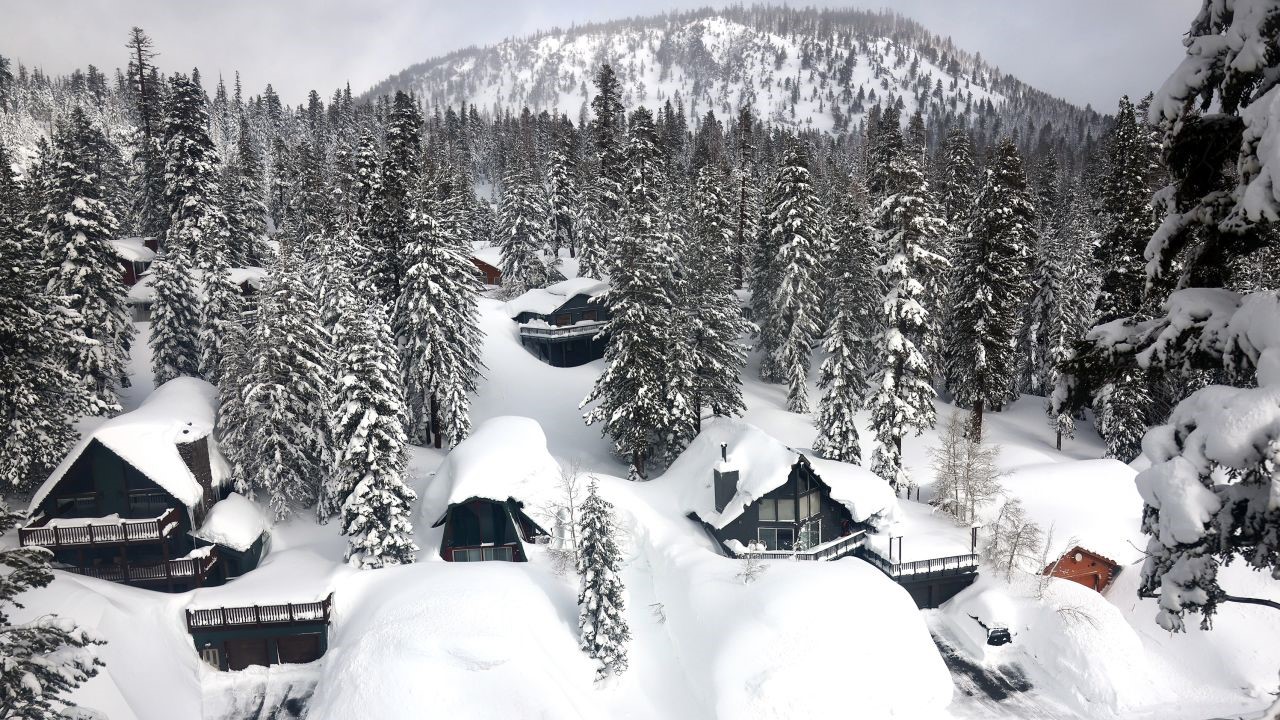Finland’s housing market remains weak
Finland’s housing market remains subdued, amidst rising interest rates and a struggling economy.
The nationwide average price of old dwellings rose by an anemic 0.59% to €2,707 (US$2,964) per square meter (sq. m.) during the year to Q3 2023, following y-o-y declines of 1.73% in Q2 2023, 4.23% in Q1 2023, 5.95% in Q4 2022 and 1.28% in Q3 2022, according to figures released by Statistics Finland. When adjusted for inflation, prices declined almost 5% over the same period.
Quarterly, nationwide house prices fell by 2.52% (-2.99% inflation-adjusted) in Q3 2023.
In Greater Helsinki, the average price of old dwellings dropped 3.95% to €4,577 (US$5,011) per sq. m. during the year to Q3 2023 and fell by a bigger 9.27% in real terms. It was the region’s fifth consecutive y-o-y price decline. Quarter-on-quarter, prices in the capital were down by 3.17% (-3.64% inflation-adjusted) during the latest quarter.
In the rest of the country, prices fell by 0.1% (-5.64% inflation-adjusted) y-o-y to €1,936 (US$2,119) per sq. m. Quarterly, prices outside the capital area increased slightly by 0.73% (0.25% inflation-adjusted) in Q3 2023.
Yet the trend varies by property type:
The average price of terraced houses fell by 5.33% (-10.57% inflation-adjusted) y-o-y to €2,097 (US$2,296) per sq. m. in Q3 2023, in contrast to a 2.4% increase in Q3 2022. Quarter-on-quarter, prices fell by 4.64% (-5.1% inflation-adjusted) during the latest quarter.
Prices of blocks of flats were up by a modest 2.52% (but declined by 3.16% inflation-adjusted) to €3,051 (US$3,340) per sq. m. during the year to Q3 2023, an improvement from a y-o-y fall of 2.27% a year earlier. Quarterly, prices dropped 1.61% (-2.08% inflation-adjusted) in Q3 2023.
Demand is plummeting, amidst high inflation and rising interest rates. In the first three quarters of 2023, the total transactions of old dwellings in Finland fell sharply by 47.5% to 30,277 units as compared to the same period last year, following a decline of 14.8% in the full year of 2022 and y-o-y rises of 16.1% in 2021, 12.7% in 2020 and 1.4% in 2019, according to Statistics Finland.
Over the same period, sales transactions plunged by 46.3% in Greater Helsinki and by 48% in the rest of the country.
In 2000 the government removed the requirement that a nonresident must obtain a permit to buy a secondary residential property in Finland, putting foreigners on the same footing as Finns. However, foreigners need permission to buy property in the Province of Aland (Ahvenanmaa), an archipelago.
Residential construction activity showed mixed results, with dwelling permits and starts falling by 48.6% and 32.9% y-o-y, respectively, during the first three quarters of 2023. In contrast, dwelling completions rose by 9.9% over the same period.
Overall, Finland’s housing market is projected to remain weak in the medium term, as it faces considerable headwinds. Financial services group Nordea expects house prices in the whole country to fall by 6% for the full year of 2023 and by 8% in the Greater Helsinki Area. This is in line with the forecast released by the Mortgage Society of Finland Hypo, which showed that house prices across the country will fall by an average of 7% this year, and by 8% in the capital. This will mark the biggest drop in house prices since 1993.
Finland’s economy is now struggling, as the increase in consumer prices and interest rates, coupled with weaker export demand, are weighing on economic activity. In Q3 2023, the Finnish economy contracted by 1% from a year earlier, following a y-o-y decline of 0.4% in Q2 and zero growth in Q1, based on figures from Statistics Finland. It now marked the biggest fall since Q1 2021. Quarterly, the economy shrunk by 0.9% in Q3 2023, after growing by 0.6% in Q2 and 0.3% in Q1.
Against this backdrop, the Bank of Finland expects the economy to contract by 0.2% this year and to grow by a minuscule 0.2% in 2024.
A history of extreme house price cycles
From 1980 to Q1 2009, the country experienced several dramatic house-price cycles. The volatility of house prices in Finland has 3 main causes:
the export-oriented economy’s sensitivity to global shocks;
the housing market’s high interest rate sensitivity. In 1994, about 70% of new mortgages were variable rate. Since 2001, more than 90% of new mortgages have been variable rates, taking advantage of historic low interest rates from 2003 to 2006.
an insufficiently responsive supply side. Finland’s long housing boom was encouraged by a decade of under-building. Less than 30,000 dwellings were completed annually from 1994 to 1999, down from 40,000 units from 1983 to 1991 (with a peak level of 65,397 units in 1990).
Finland’s most recent house price boom from 2001 to Q2 2008 was typical. There was strong economic and wage growth, plus a decline in interest rates. The result is a strong increase in house prices. From 2001 to Q2 2008, house prices in Finland rose by 42% and by almost 46% in Greater Helsinki, in inflation-adjusted terms. Then the global crisis caused real house prices to decline by about 6.4% from Q2 2008 to Q1 2009.
From 2010 to 2019, real house prices in Greater Helsinki rose by 5.8% but declined by 8.2% in the rest of the country. Surprisingly, the housing market has remained stable in recent years, despite the Covid-19 pandemic. From 2019 to 2021, nationwide house prices rose by 6%, in inflation-adjusted terms. Real house prices increased by 10.1% in Greater Helsinki and by a modest 3.6% in the rest of the country. However, inflation-adjusted house prices nationwide plunged 13.6% in 2022, mainly due to falling demand amidst high inflation and sharply rising interest rates.
Residential construction activity mixed
Residential construction activity showed mixed results, amidst the combined impact of increasing borrowing costs and rising construction material prices. During the first three quarters of 2023:
Dwelling permits in residential buildings plunged by 48.6% y-o-y to 15,653 units in Q1-Q3 2023, following an annual decline of 17.8% in 2022 and increases of 9.9% in 2021 and 5.8% in 2020, according to Statistics Finland.
Dwelling starts also fell sharply by 32.9% to 19,924 units, following a decline of 19.9% in 2022 and increases of 18.5% in 2021 and 7.2% in 2020.
Dwelling completions, on the other hand, rose by 9.9% to 30,976 units from the same period last year, following increases of 11.5% in 2022 and 4% in 2021, and a decline of 9.1% in 2020.
Currently, there are over 3 million dwellings in Finland.
Property transactions plummeting
Demand is now falling rapidly again, amidst high inflation and rising interest rates. In the first three quarters of 2023, the total transactions of old dwellings in Finland fell sharply by 47.5% to 30,277 units as compared to the same period last year, following a decline of 14.8% in the full year of 2022 and y-o-y rises of 16.1% in 2021, 12.7% in 2020 and 1.4% in 2019, according to Statistics Finland.
Over the same period:
In Greater Helsinki, transactions for old dwellings were down 46.3% y-o-y to 8,825 units, after falling by 16.5% during 2022 and rising by 11.9% in 2021 and 12.4% in 2020.
In the rest of the country, transactions for old dwellings dropped 48% y-o-y to 21,393 units in the first three quarters of 2023, following a fall of 14.2% in 2022 and increases of 17.8% in 2021 and 13.8% in 2020.
By property type:
For terraced houses, transactions plunged by 48.5% y-o-y to 9,099 units during the first three quarters of 2023, after falling by 18.7% during 2022 and increasing by 14.4% in 2021 and 15.8% in 2020.
For blocks of flats, transactions fell sharply by 47% y-o-y to 21,153 units, following an annual drop of 12.9% in 2022 and growth of 16.9% in 2021 and 11.8% in 2020.
globalpropertyguide.com




